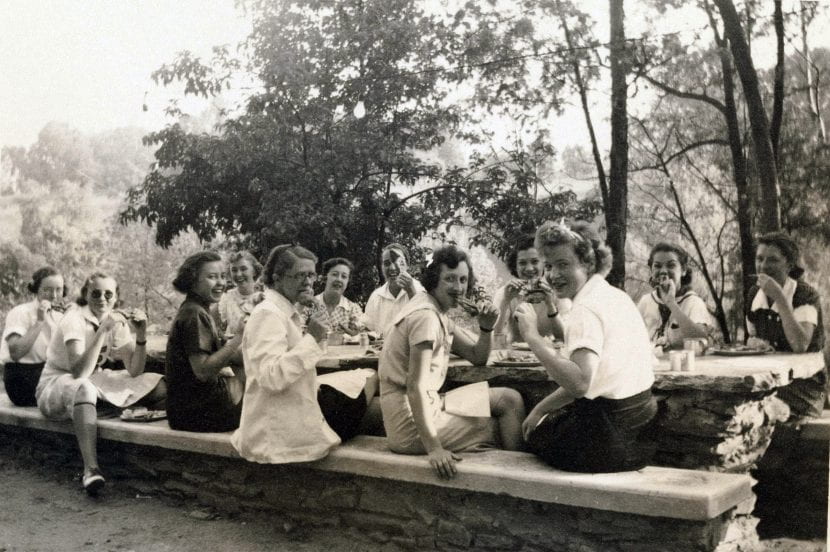A couple years before Donald “Doc” Minnegan joined the faculty at the Maryland State Normal School [MSNS] at Towson, another Physical Education teacher was already in place.
A young woman with dark hair and dimples, 20-year-old Mary Elizabeth Roach was often mistaken for another student. The students in 1926 referred to her as “Our Faculty Child”.
“When Miss Roach first appeared upon the scene at the beginning of the year,” reports the December 1926 Towerlight, “all of our Seniors decided she must be one of the new Junior students. When she held the door open for a certain Senior, the Senior passed through with a very superior air and turned to our gallant Miss Roach, and shouted, “Thanks, kid!”
|
|
Roach was raised in Bridgeport, Connecticut and had attended a normal school there. She’d intended to become a kindergarten teacher, but when she enrolled at the Central Professional School of New York City, she was drawn instead to physical education, and in particular, dancing.
Dancing was a minor piece of a teacher’s education — something that every teacher should know a little bit about. In 1926, MSNS Physical Education had been a department for only about 10 years, created after WWI. Roach’s love of dancing shows up immediately in that year’s course catalog:
Athletics – Junior and Senior Years
2 hours per week for 36 weeks each year
The purpose of the work is to bring about physical development to stimulate an interest in activity, and to encourage team play and sportsmanship. Frequent inter-class and inter-section games are played in each sport as an outgrowth of the work. Electives will be given, in the fall term, in hockey, soccer, volley ball, basket ball, tennis, hiking; in the winter term, in folk dances, posture games, elements of games, badge tests, dancing and basket ball; in the spring term, in volley ball, fieldball, baseball, track, tennis and hiking.
|
|
Donald Minnegan joined the faculty in 1928, replacing Henry L. Shanks as the men’s instructor in Physical Education. Even as the sports program grew, the faculty remained small. At first, four instructors oversaw the program, but in 1934, that number shrunk to three, and remained at three for 15 years.
The end of WWII meant a growth in student population, programs, and instructors. By 1950, the Physical Education faculty measured 6 instructors — three men and three women.
One of the more fun events of the school was Demonstration Night. Teams of students would compete against each other in games, dancing, and other physical skills. And Roach’s dance classes were obviously part of the competition.
|
|
Dancing wasn’t Roach’s only talent, though. She also taught hockey, basketball, bowling, volleyball, and softball. She was a big football fan and devoted to the Yankees.
And while she was teaching, she was also attending classes at both New York University, where she got her bachelor degree by 1940, and at Teachers College, Columbia, where she earned her masters by 1948.
During her time at Towson, Roach often served as the faculty adviser to the Women’s Athletic Association [WAA]. This was a student organization that gathered together to learn basic athletic skills and compete either as individuals or within teams. All students on campus paid a fee towards athletics, and all women were members of the WAA but only those who participated made them active members of the WAA.
|
|
By the late 1960s, this model was being challenged both by lack of interest by students and by the education amendments of Title IX. New regulations meant that the Physical Education Department was no longer split between men and women.
But Mary Elizabeth Roach had already said her farewell to Towson, retiring in 1973, one year after Doc Minnegan’s retirement in 1972.
In total, Roach worked at Towson for 47 years, 2 years longer than Doc Minnegan.
There isn’t much to find in the records about Mary Elizabeth Roach, but sometimes I wonder what would have happened if we’d named our mascot after her rather than her more well-known colleague. Would we have even been the Tigers or would our school fight song have been “La Cucaracha”?




